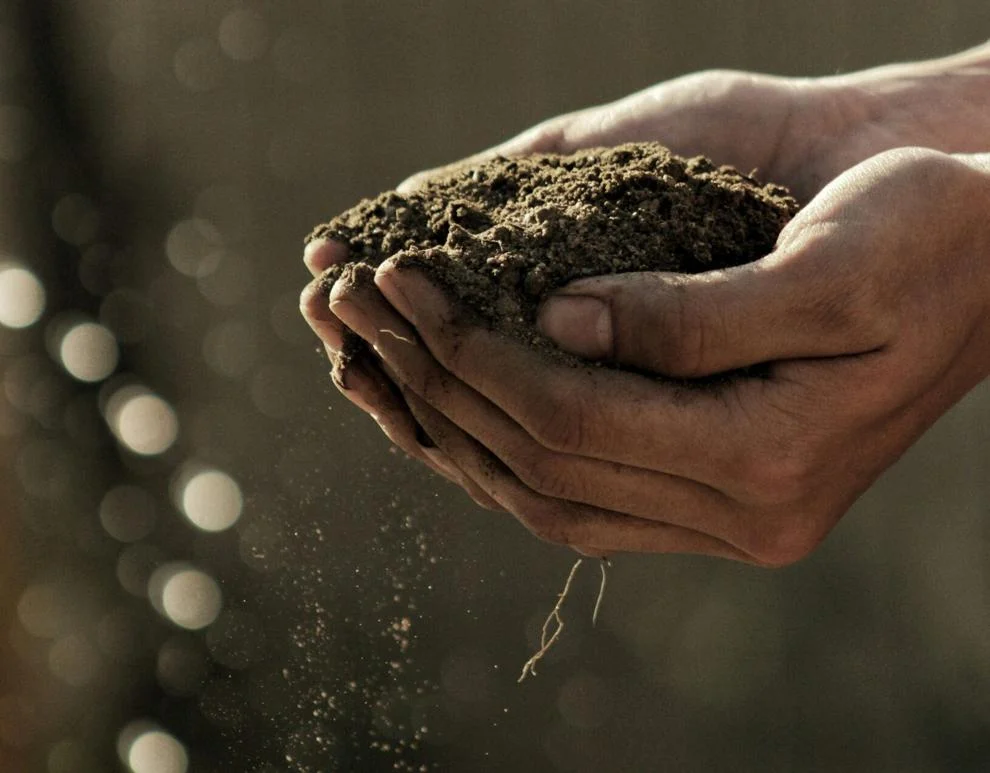Beginner Gardener: The dirt on soilTemplate Dana Cook
By Dana Cook
WSU Chelan/Douglas County Master Gardener


Renaissance man Leonardo da Vinci (1452-1519) said, “We know more about the movement of celestial bodies than about the soil underfoot.” It took about another 300 years for the study of soil to become a true science.
Today we know that soil is a complex, living, dynamic ecosystem of diversity created from the minerals of weathered rock, decaying remains of once-living things (organic matter), water and air. And it is the single most important factor in determining the success of your gardening efforts.
Not only does soil physically support your plant, but it influences the water and nutrients your plant babies need to thrive.
Soil Science Simplified
Ideal soil composition is 45% mineral, 25% air, 25% water and 5% organic matter. Good garden soil is like dark, soft crumbly cake.
Soil texture: Soil contains a combination of three basic mineral particles. From largest to smallest, these are sand, silt and clay. The combination of these particles determines its texture. Soils in our area range from sandy on the east side of the river to siltier on the west side. However, you may have different variations even within your own yard.
The easiest way to learn your soil’s texture is to grab a handful and roll it into a ball. Does it feel gritty and crumble apart? That is sandy soil. Does it roll-up slippery and sticky, and easily rolls into a sausage shape like Play Dough? Yep, that is clay soil. Does it roll up into a smooth ball, but crumbles when you try to roll into a sausage shape? Goldilocks would find your loamy soil “just right.”
Your soil’s texture determines its ability to hold water and nutrients. Sand does not hold water, quickly washing away nutrients. Clay, or “claggy”as the Brits say, soil can easily become waterlogged but holds nutrients well. Silty soil is the sweet spot of water and nutrient retention but can become dusty and blow away.
Soil Structure: The minerals of soil cluster combine with organic matter to form clumps. The space between these clumps allows water and air to move throughout the soil. Ideal soil structure is sponge-like, allowing water but draining the excess.
Organic Matter: The soil food web is perhaps the most important and easily destroyed component of your soil. A whole community of critters lives within your soil. A billion microorganisms may live in one-quarter teaspoon of topsoil. These are bacteria, fungi, and invertebrates that breakdown decaying plant and animal remains to create organic matter. This organic matter provides the all-you-can-eat buffet to your plants. Without this earthy ensemble, your dynamic ecosystem of life-giving soil is just dead dirt.
Best Soil-Health Practices
1. Get a soil test. A soil test can tell you the composition of your soil, its nutrients and pH.
2. Increase organic matter by adding compost. For more info on composting, check out the WSU Chelan-Douglas Master Gardener website bit.ly/cdmgcomposting.
3. Protect your soil’s structure by avoiding tilling.
4. Add mulch to help keep moisture, add nutrients and suppress weeds.
5. Avoid using any chemical with a name ending in -cide; fungicides, herbicides and pesticides impact your soil’s food web.
A WSU Chelan Douglas County Master Gardener column appears weekly in The Wenatchee World. To learn more, visit bit.ly/MGchelandouglas or call (509) 667-6540.
